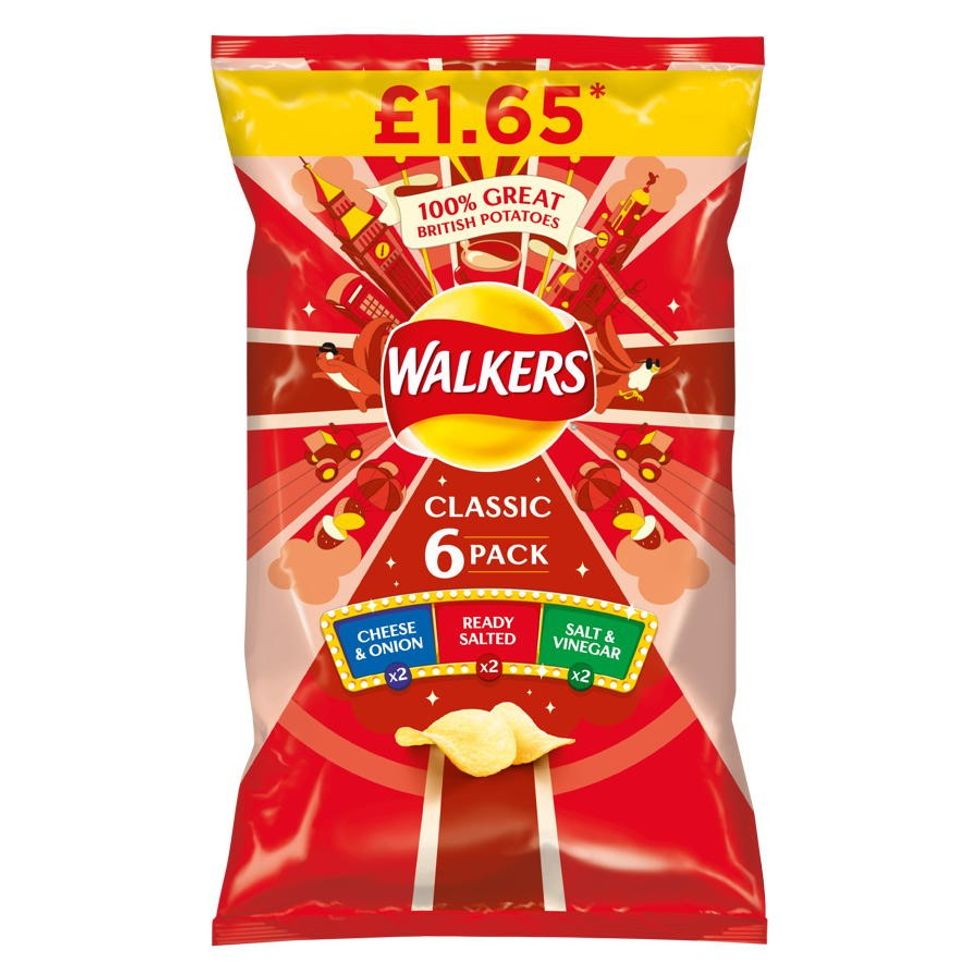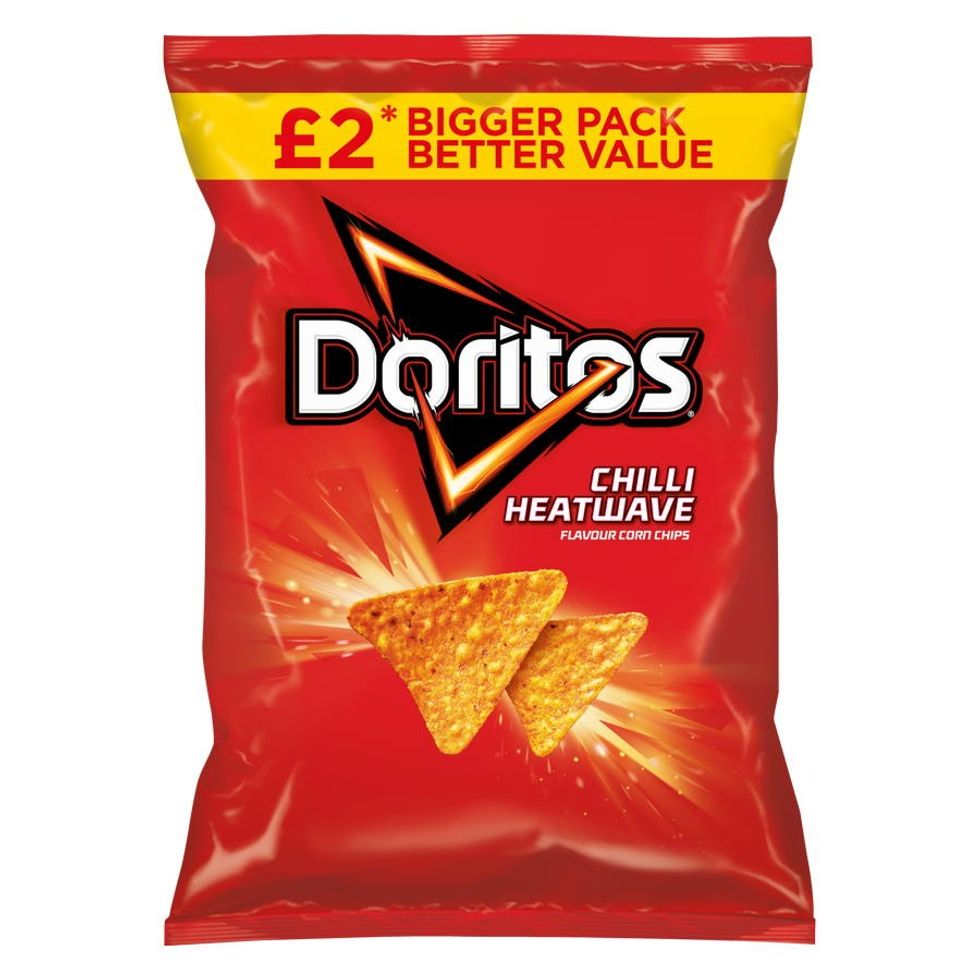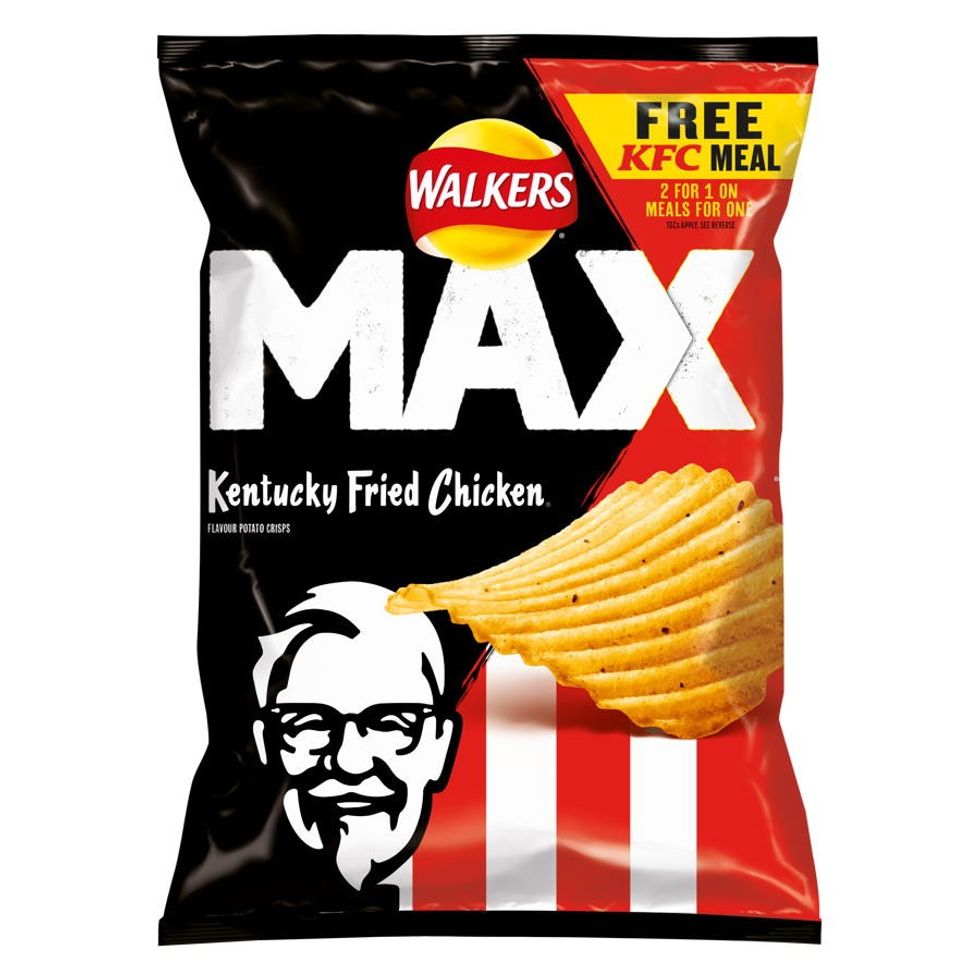There is a sense, as the heatwave of summer really comes on, that finally we are nearing the end of something – namely, almost a year and a half of pandemic and the accompanying lockdown conditions.
It really has been a long haul. Asian Trader last talked to Guy Harvey, who is Impulse Category Management Controller at PepsiCo, the producers of Walkers Crisps, half a year ago in February, in the depths of the winter pandemic wave.
Back then – as now – we spoke on a Zoom link, and Guy had just moved into his loft-office at home. This time he was still there, and the loft was looking a lot more homely and improved over the interim. Guy meanwhile was sporting a lustrous, almost Arctic explorer-style beard, and it brought home just how long this exile from normality has been with us.
In February, Guy had spoken about how Walkers was instituting its “Hero 25” range to help convenience retailers sell up to 46 per cent more crisps and snacks weekly, and make most efficient use of their shelves and facings – “structuring focus in the right areas”, as Guy put it, given the changing consumer patterns under pandemic; trends, hestressed, that had been accelerated by the lockdown, but had not been born out of it.
“Price-marked- packs,” he said in February, “regardless of lockdown, have been in long term-growth, and when you look at the compound annual growth (CAGR), it's been over 10 per cent for the last five years. ”The consumer is actively hunting for value reassurance, and this is part of a wider economic trend that has arisen following the great financial crisis and the stagnation of wages in the face of creeping inflation – hence PMPs are a big part of shoppers’ lives and Guy did not think they would go away. It remains to be seen what the long-term economic implications of lockdown-accrued debt will be, but it will probably mean searching for even more value for many people.
“Obviously, singles and food-to-go mission is the biggest unknown question,” he had said – and it is a question that has already been partially answered by the easing of lockdown conditions starting in May, which have already spurred a big uptick in food-to-go sales, and which will probably be followed by greater single-serve sales as people get back into work and commuting routines.
“We would expect a bounce back when we move out of lockdown and move into tiers,” Guy said. “So we're predicting kind of bounce back for the singles-based food-to-go mission. But who knows, at this point, what that looks like. And we still we still have every faith in the bigger pack formats that have remained popular through lockdown.”
Bigger packs were the other significant element of consumer purchasing – perhaps obviously, with families cooped up at home and sharing the natural outcome of togetherness. In this case, what seems to be happening is the establishment of new (-ish) habits and traditions, again accelerated by lockdown. In fact, larger formats were already on their merry way thanks to the Big Night In phenomenon that has been with us for several years now. As we see in this issue, the BNI is now a national institution, a new form of social and family life that is probably here to stay – especially with perhaps a third of hospitality permanently lost and value for money being at a premium for hard-pressed families. In other words, even if people are allowed out, they might still decide to stay in more often.
PMP and BNI
So what does Guy foresee this summer as the nation emerges, blinking from lockdown into sunlight?
“We really notice two big trends over the last year,” he says.“We've obviously seen a big shift in shopper behaviour and shopper missions. I remember speaking to you about our new range that we launched back in February, and those shifts in shopper missions continue. So, obviously take-home missions have become far more important in the marketplace with people spending more time at home. There are 11 billion more in-home occasions than there were a year ago. And we've seen stock-up and top-up still be the biggest mission so they represent 51 per cent of all missions.”
It is true that the “great opening” has seen lockdown patterns of sales and consumption across the convenience channel hold up well, and this is a phenomenon of great interest: will the gains made by the sector during Covid be crystallised?
“Big packs have performed really well,” Guy agrees, citing the format that enjoyed the biggest sales surge,“and the £1 PMP continues to perform well. It's growing at just over 4 per cent; the bigger sharing packs are growing at over ten per cent. There's a really fine balance isn't there? Obviously these take-home missions have been the dominant missions, but as lockdown eases,food-to-go missions are beginning to build back. Within May they made up 44 per cent of all missions. Whereas if we looked at May the year before, they were about 35 per cent of missions.”
Again, the shift to spending more time out of home need not concern convenience if it means sales switch from indoor sharing to on-the-go sales: for the most part they are substitutable revenue streams for independent retailers.
“We are beginning to see those foods go missions bounce back,” Guy says. “We're still not seeing single packs return to growth, but we're seeing more and more momentum go into the single packs.”
Crisps and snacks (and don’t forget nuts!) are lucky to be what he describes as a “robust category”, if we look at the performance over the last five years.
“If you were to ask me a question about how crisps and snacks are performing,” he says,“the reassuring thing is within symbols and independents they have grown.”
The category grew about 3.3 per cent in the four years between 2015-2019 but thanks to the at-home nation, they grew an astonishing five per cent last year. On MAT[moving annual total) basis this year, crisps and snacks are still growing about one per cent.
“We're beginning to lap some of the big events from last year, particularly lockdowns one and two where channels really benefited from the increased footfall,” says Guy, explaining that a slowdown in growth is to be expected as normal service is resumed. Would he say that PMPs are the way forward?
“On the whole crisps and snacks performance is robust,” he repeats.“PMPs, like I say, are definitely the dominant pack, they make over half of all sales; and I said before they're growing at 4.4 per cent on an MAT basis” – four times faster than the category as a whole.
Even early last year, before the economic consequences of the lockdown were really imagined, we reported that PMPs were already of increasing importance for independent retailers – and also that PMPs were a vital weapon in their arsenal for fighting the supermarkets. That seems to be even more the case now.
“I think your question around the role of PMPs is an interesting one,” says Guy. “Obviously, the £1 PMP is the dominant pack. But particularly with more in-home occasions, we've actually launched a £2 PMP, so across three linesforDoritos, and one on Sensations.”
The PMP range growth is significant. The £1 PMP was originally theorized as being perfect for the impulse buy, and could hoover up loose £1 coins in customers’ pockets. Now the £2 PMP can do the same for £2 coins, but is really a response to the growth in sharing occasions.
“To help with that kind of hunger-fill, socialising, sharing occasion, the£2 PMP means the grammesare substantially higher – between 170 and 200 grammes. It will help those looking for that kind of mission to be able to buy a PMP, and have that security around the pricing structure. I buy it and consume it, with friends,” he laughs.“I wouldn’t advocate somebody consuming it in one go by themselves!”
There is also the ongoing Hero 25 range which can back up and provide ballast to the PMP cavalry charge, so to speak.
“My advice to a retailer is that you need to fish where the fish are,” Guy advises.“And the [£1 PMP] is the biggest segment,and what we've tried to through our Hero Range is to increase the focus a bit this year. So we've 25 best-selling products that cover our key brands – Walker's, Doritos, Wotsits, Quavers, Monster Munch, and we've actively increased the focus on those packs.”
That means not just promotional activity but physical changes to the packs themselves to increase attractiveness.
“We've added within certain packs 20 per cent extra free as well, so on ten of our best-selling snacks lines across Wotsits, Quavers, Monster Munch and Squares, we've actually added in more volume, to support retailers. And for consumers in a difficult timevalue is becoming more important. So we've actively put more value into some of our packs to help support the industry.”
Value is the watchword as furlough ends and rents fall due again after the government finally tapers its pandemic support programmes. Ex-Iceland boss Bill Grimsey has released a report suggesting that across all independents, debt has increased fourfold, and that with customers also looking to save money, selling more into a tough economic climate is going to be vital for survival – meaning more PMPs and extra in the pack.
As for the Big Night In, does Guy see it holding its focus as work routines re-establish themselves?
“It’s an interesting question,” he replies.“I think symbols and independents will benefit in two ways. And I think adaptability is the word I probably use here. That said, more people are spending more time in-home than they ever have done before. I've definitely spent more time, I haven't been to the office for 18 months, and those people that would have worked in an office environment are staying home more broadly.”
He cites the 11 billion more in-home “vacations” to prove that the thirst for the Big Night In is definitely not going away:
“When I reflect on some of the events that are happening in the marketplace at the moment,” he says,“ I believe the Big Night In will become more important. We've [had] the Euros, and I’m a big rugby fan, the Lions are coming, and the Olympics are on. So these opportunities to socialise in-home will be incredibly important. So, yes, we think that certainly the BNI will be a key area over the summer.”
How, though, is the supply side of things, with the driver shortages and demand from the on-trade kicking in? And now the so-called “pingdemic” leaving millions of workers stranded at home – (probably eating Walkers PMPs)?
“Certainly for us, within crisps and snacks, the demand continues to increase. And that puts stress on the general supply chain. And that can be said for a number of businesses. So that's about all I can say in regards to that. I mean, we are still seeing huge demand for crisps and snacks. For a lot of our trade businesses our supply chain has been, particularly last few weeks, very robust. So hopefully that will continue in the coming weeks.”
Walkers is lucky in that they source their potato requirements domestically with large, long-term, secure contracts (and had just taken out a new 10-year lease on their massive Leicester factory-warehouse). All this smooths the essential supplies of crisps and snacks and arguably makes them an even more visible and attractive category than usual.
HFSS high-jump
The next hurdle, though, is health, and the impending high fat, salt and sugar (HFSS) legislation bruited by the government. As one by one the nation’s enjoyments and indulgences are examined and found damaging in some respect, producers have to be ready to refine their products and comply with requirements mandated by expert opinion.
The soft drinks industry, it is fair to say, responded brilliantly to the sugar tax by encouraging consumption of lower-calorie fizz, and consumers even seem to prefer it. Could the same be done for crisps and snacks without destroying the taste and sensation that epitomises the category?
“We look at HFSS with optimism, and we're very supportive of the government's legislation,” says Guy optimistically.“The government is trying to reduce calories and it's targeting 15 categories. We have had a long-term commitment to trying to produce better-for-you alternatives, with the launch of stuff like Walker’s oven-baked back in 2006.”
So it’s more than a “Lucky the government is mandating this because the industry would never have done it themselves” moment?
“We have brought out sub-100 calorie and multipack mixes in our grocery areas,” agrees Guy.“So we been committed. But that said, I think there's a real opportunity for convenience and symbols and independent stores [with HFSS]. I look at it with real optimism, I think less volume will be sold in the big shops’ grocery environment, and I think there'll be more stock-up and top-up shopping impulse in convenience.”
Guy says that he reckons there will be less volume because multi-buys drive additional purchase, “but we certainly believe consumption will still remain strong. And as people continue to consume, but perhaps at similar rates, that means they'll get through some of those packs bit quicker, buying less volume in the grocery environment.”
On this thinking, the lower volumes in multiples will translate to more sales in convenience:
“We think they'll certainly be a real benefit, or could be a real benefit to conveniences as people perhaps run out and then need to stock up and top up a bit more.”
As to exactly what will be selling more in independents, the theory is that sharing and PMPs will continue to lead the way. “Our working hypothesis is that the PMP will continue to be important but those kind of bigger sharing bags – the 150 gramme-plus and multi-packs – will become more relevant. Multipacks have struggled a bit this year, they're really benefited from lockdowns 1 and 2as people were really looking to top up and stock up. But they they've declined about 1.1 per cent year-to-date. That said, we think they'll be there'll be a real role for them in the post HFSS world as people want to stock up.”
The crisps and snacks world is a rapidly changing environment, but the category seems to be swinging in the direction of indies rather than the huge multiple shopping trips of old, if Guy is correct.
Certainly the incredible variety and choice of the category is best served by the impulse channel rather than the van-sized giant packs that fill supermarket trolleys, and if new HFSS legislation nudges that more so, then it is all to the good.
Still, “There’s going to be a lot of confusion,” says Guy.“It's quite difficult legislation to understand it's not it's not black and white – it is a bit grey. So we feel like there is a real role for us as a supplier to help and work with our supply partners on helping independent and symbol stores understand what they can and can't do and what the right facts are to list. I think that will be a key focus area for us over the coming months as we get as we get more visibility of the legislation.”
Future crisp
Following the lockdown, more customers have grown used to doing a main or weekly shop, or major top-ups, in their local indy store, so if the crisp and snack sector can respond adequately to family shopping demands with more multipacks and larger PMPs to complement the great range indies can offer, than the future for the category looks bright – or even brighter.
“We are looking to actively increase our range of multipacks for next year to help support the paradigm,” Guy promises.“Which pack format that will be, whether 6-12 or larger pack formats, we will clearly try and work through, but we definitely think that demand for multipacks will increase into next year.”
He also points out that the understanding of the convenience shopper is coming on in leaps and bounds.
“When we looked at a number of the reasons why people buy crisps and snacks, taste was number one,” he says. “The role of brands was number three, indulgence was number four. And value was number six. Clearly value means different things to different people. It's not just cash in the pockets, it's all of those things I've mentioned, really it's the taste of products offers.
So taste is the cutting edge of crisp success, with value bringing up the rear..
“We know that 62 per cent of people are looking to actively save money on their groceries now and we think by offering more value to retail store managers and owners, they can turn over those products a lot quicker, ultimately sell more revenue. And in principle, there's less waste.
That brings us neatly back to making the most of your shelf-space and facings, the nuts and bolts of merchandising – and Walkers’ Hero 25 still makes sense.
“What we find is there's a lot of inefficient packs in the marketplace. So when you look at symbols and independents, and you look at the bottom 10 per cent of sales, that actually comes from 86 per cent of lines, packs in the marketplace.”
This is the 80/20 pareto principle in action: a few products do the most work for profit. The trick is to stock just those ones.
“You need to make sure your products are tasty, you need to be on the right brands and in the right flavour profiles,” Guy concludes, and amen to that.








